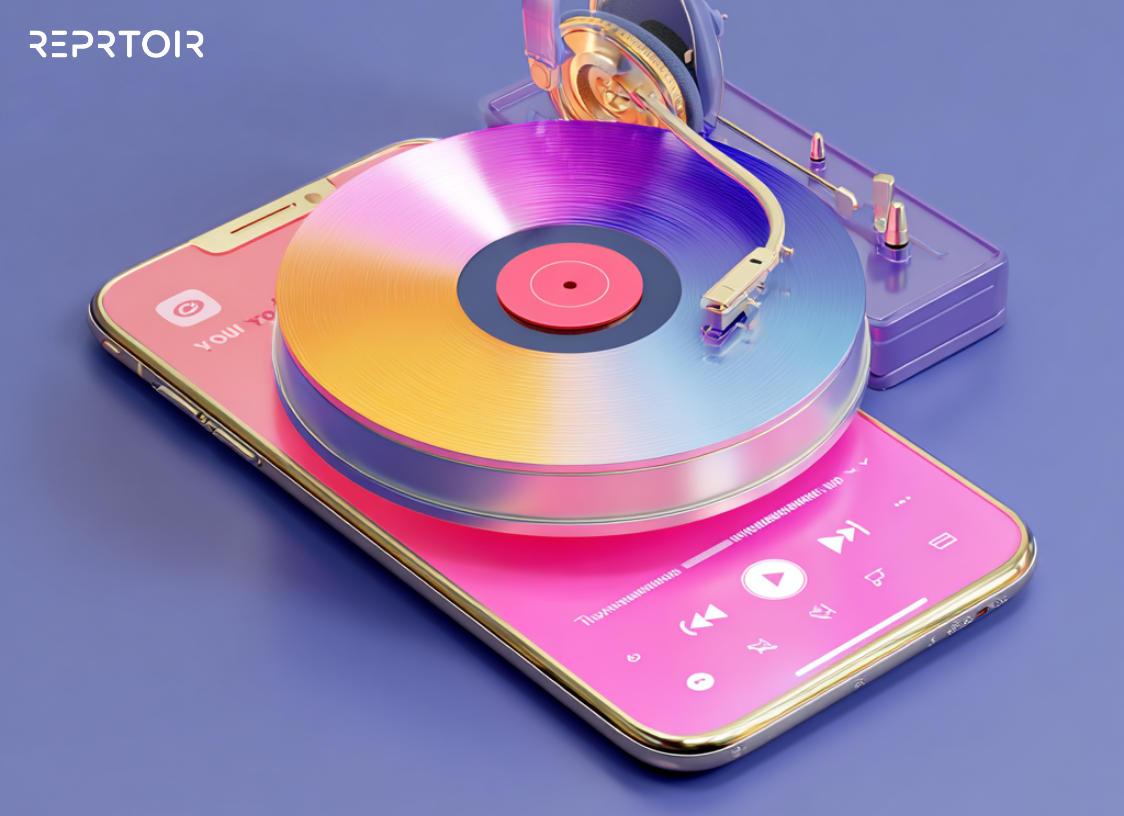By 2030, the global music merchandise market is expected to reach $16.3 billion.
That number includes physical goods, digital items, and branded experiences. It's a big step up from the T-shirts and posters that once defined artist merch.
For years, merchandising sat on the sidelines of the music business. It was informal, inconsistent, and often disconnected from real strategy.
But as merch evolves into a key source of music revenue and an essential component to music marketing, it’s time for the industry to approach it with more intention and clarity.
This article explores why merchandising deserves that focus, and how music companies can turn it into a smarter, more structured revenue stream.
Merch as a Serious Music Revenue Stream
While merchandising is booming, it’s also evolving. As the market grows more competitive, the focus is shifting from volume to value.
Artists are no longer just printing logos on hoodies.
They’re building brand identities and launching immersive fan experiences. They’re exploring new formats like digital goods and limited-run collectibles.
This shift makes one thing clear.
Merch is one of the few ways artists and their teams can offer fans something direct, personal, and profitable. Streaming payouts are unpredictable, and merchandising offers both creative freedom and a steady source of income.
So it’s no surprise that more artists and teams are putting their energies into merch.
But with that focus comes new challenges. Managing inventory, tracking music revenue, and handling distribution across multiple platforms is far more complex, especially when fans expect smooth digital access and exclusive drops around the world.
Some music companies are now managing merch alongside releases, rights, and royalties using dedicated tools.
Reshaping the Landscape
One company that’s changed the game in music merch is Bandcamp.
Its monthly event, Bandcamp Friday, recently generated $3.5 million for independent artists in just 24 hours. Since launching, the program has raised over $140 million, mainly through merch and music sales.
This direct-to-fan model isn’t just about volume. It gives artists more freedom over how and what they sell.
They’re deepening fan relationships and earning more than they would through traditional retail channels.
Platforms like Bandcamp have shown that fans are willing to pay more and more often. This is especially the case when they know their money is going straight to the artist.
This shift is changing how artists think about selling merch.
Instead of relying on tour tables or third-party stores, they’re creating their own direct-to-fan setups. It’s part brand, part business, and part community, and fans are showing up for it.
Merchandising as Brand Architecture
This shift isn’t limited to independent artists.
At the top of the music business, many artists are turning merchandise into full extensions of their creative identities:
- Taylor Swift turned her Eras Tour into a merchandising machine, with exclusive drops and pop-ups driving massive fan demand.
- Rihanna launched Fenty Beauty, which transformed her brand into a global fashion and cosmetics powerhouse.
- Pharrell Williams, now Men’s Creative Director at Louis Vuitton, brings fashion and music together as part of a unified creative vision
- Billie Eilish’s merch pop-ups reimagine retail as immersive fan experiences.
And it’s important to point out that in Japan, CDs are still widely purchased as collector items. Vinyl is booming again, but it’s not because people are listening more. Fans want something tangible to hold, display, and keep. So, it’s safe to say that merch is storytelling, and a way for fans to live inside the world an artist creates.
Merch ties into things like branding, design, and legal rights. So, it needs to be handled in an organized way. Trademarks and licensing may be formalities, but they’re also key to protecting an artist’s brand and the value it creates. Many mid-sized music companies are still catching up in this area.
From Side Hustle to Structured Operation
The problem is, a lot of companies still treat merch as an afterthought.
There might be a contract or two, a spreadsheet, and a Shopify store running in the background until something goes wrong.
The truth is, merch now needs to be managed just as carefully as catalogs or royalties. It’s a key part of any smart music marketing strategy.
And with so many people involved, a messy or unorganized approach just doesn’t work anymore.
That’s why some in the industry are starting to manage merch revenue alongside everything else. This way, it’s not just tracked for accounting, but fully connected to the rest of the music business.
Recent updates to Reprtoir’s platform let music companies manage merch revenue in the same system they already use for catalogs and contracts.
Our new Products feature syncs with Shopify, supports different product types, and ties merch revenue to the contracts that define royalty splits. What used to be “nice to have” is quickly becoming essential.
The Legal Side of Merch
There’s also a legal side to merchandising that’s becoming harder to ignore.
As the market grows, so does the grey area of fan-made and unofficial goods. In fact, about 25% of merch purchases now come from outside the official music industry, through platforms like Etsy or second-hand sellers.
This presents both a challenge and an opportunity. Unlicensed merch can dilute brand value and cut into profits. But it also shows just how eager fans are to engage with their favorite artists. With the right strategy, some of this energy could be channeled into official collaborations or licensed product offerings.
Either way, music companies need better systems to track what’s being sold, who owns the rights, and how music revenue flows back to the right people.
And as more artists, publishers, and digital streaming platforms get involved, that complexity will only increase.
In Closing
In today’s music industry, merch isn’t an add-on. It’s essential. Treat it like publishing. That means having clear workflows, connecting it to your music marketing plans, and making sure everyone involved knows what’s being sold and what it’s worth.
It also means using tech to make things easier. Automate what you can. Track inventory and sales in one place. The goal isn’t just to save time, but to capture more revenue, faster.
Equally important is this: merch should reflect the artist. Whether it’s a small batch of handmade items or a full lifestyle line, fans notice the details. When merch feels thoughtful and on-brand, fans are willing to pay for it. It’s a core part of the music business.
Whether it’s Bandcamp’s direct-to-fan approach or major artist brand launches, if merch isn’t part of your strategy, you’re leaving money on the table.
Reprtoir’s latest features are designed to support music professionals as they expand into new revenue territories. From rights to royalties to merch, smart infrastructure makes smart business.
Curious how it works?
Get a free demo to experience firsthand how merchandising fits into the future of the music business.










